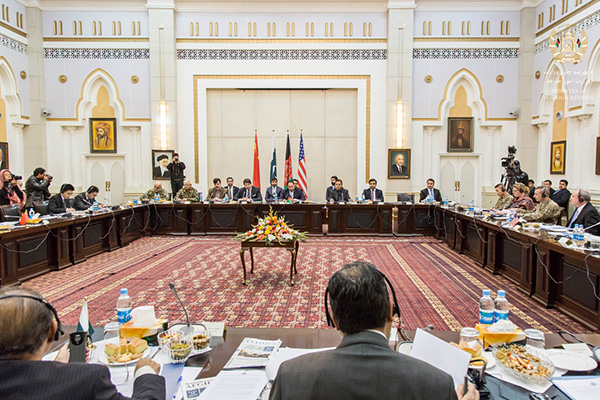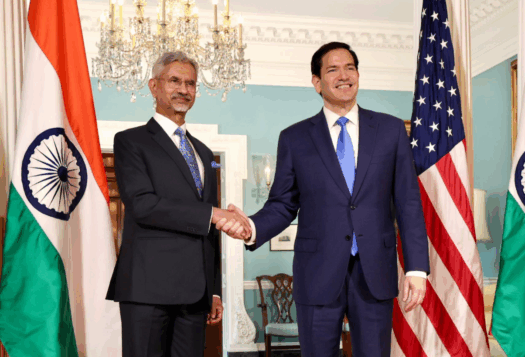
Mullah Omar’s death and Mullah Mansoor’s rise as an Emir of an Islamic militia prompted expectations of the Taliban being forced back to the negotiation table. A political settlement was longed for after Pakistan showed signs of pressuring the Taliban. 2016 closes upon unrequited hopes, however. A variety of indicators show that peace and stability are still a far off dream for Afghanistan. Political settlement of any kind appears impossible as of now. Afghan and NATO forces have only succeeded in keeping the Taliban from overrunning major cities. This article will highlight three major developments in Afghanistan in 2016 that will impact the future course of the Afghan conundrum.
Mullah Akhtar Mansoor’s Death and Taliban Unity
In 2016, the Taliban had many successes and a few setbacks. Militarily it grew in strength by taking over many districts especially in high priority areas such as in Kunduz and Helmand provinces. According to a 2016 U.S. Department of Defense Report, the Taliban control territory inhabited by over 10 percent of the Afghan population and have contested control, with Afghan and NATO forces, of another 20 percent. In May 2016, Mullah Akhtar Mansoor was killed by an American drone in Baluchistan when he was returning from Iran. His death has further exacerbated the already existing cracks within the group. After Mullah Omar’s death, the Taliban struggled to maintain unity. Many top Taliban military and political leaders such as Abdul Manan Niazi, Mansour Dadullah, Shir Muhammad Akhudnzada, and Mullah Baz Mohammad Haris refused to pledge allegiance to Mansoor. Mullah Rasool, a Quetta Shura member, and Mullah Zakir Qayyum, an important Taliban military commander, publicly denounced Mansoor. Divisions within Taliban cadres were exploited by the Afghan intelligence agency, the National Directorate of Security (NDS). Fierce fighting erupted between Rasool’s group and the Taliban in Zabul province on November 15, 2015 in which 50 fighters were killed on both sides. Mullah Rasool’s group even offered to participate in peace talks. Mullah Omar’s brother, Mullah Manan, and son, Mullah Yaqoob, also refused to accept Mansoor as their leader. It was only after the Pakistani military establishment held up Mullah Rasool in jail and the Haqqani Network exerted leverage to push Mullah Manan and Mullah Yaqoob to accept Mansoor, that the latter was accepted as leader. Mansoor further struggled to unify cadres who were fighting on the ground. There were also media reports that show that young radical Taliban cadres are switching allegiance to Islamic State (IS) for monetary and ideological reasons.
https://twitter.com/NDSAfghanistan/status/734307471125319680
When Mullah Mansoor first assumed the leadership role, he was projected as accommodative, moderate, and open to talks by many security analysts. His closeness to the Pakistani military was seen as potential leverage to push him towards a political settlement. These expectations have been proven wrong. Mansoor soon turned out to be a hardliner; presenting himself as such, helped to address resentment within Taliban about his closeness to the Pakistan army. He explored other avenues for financial and military support. He reached out to Iran and Russia for support – a move that probably irked Pakistani intelligence agencies. It is believed that he had not been in contact with Pakistani agencies since March 2016. Pakistan’s complicity in Mansoor’s killing not only enraged the Taliban and gave hardliners within the Taliban reason to shift their base from Pakistan into Afghanistan. According to Nasima Niazi, a female lawmaker from Helmand, the Taliban is relocating their bases from Quetta and Peshawar to Helmand. Mansoor’s death also blurred the line of distinction between the Afghan Taliban and the Pakistan Taliban (TTP). According to media reports, the Afghan Taliban helped a TTP-affiliated group to orchestrate an attack on a Quetta police station in October.
Mansoor’s death didn’t weaken the Taliban’s military prowess, but it did impact its political cohesion. Its new Emir, Haibatullah Akhunzada, an old religious figure with no military background, now has the daunting task of keeping the Taliban a united front. Since he became an Emir, his deputies Sirajuddin Haqqani and Mullah Yaqoob are controlling military commissions. The Haqqani Network has taken a leadership role in the Taliban. With increasingly complex geopolitical developments in the region, and the Taliban’s successful diplomatic endeavours with other neighbouring countries, it seems impossible that Taliban will cease fighting and enter into any meaningful dialogue. Rather, the Taliban will continue to encroach upon as much territory as it can and use that as a bargaining chip at the negotiation table in the future. Much will depend on how long Haibatullah Akhunzada keeps Taliban cadres united and how much the Taliban can tolerate leadership transitions in the future.
Taliban Offensives and the Rise of IS
2016 marks the deadliest period in Afghan history. Afghan forces suffered 15,000 casualties and had lost 2.2 percent territorial control to the Taliban by October. These losses occurred despite the fact that the Taliban was going through a transitional period for the first time since its emergence. Also, the rise of the Islamic State (IS) in Afghanistan forced the Taliban to face another war front, engaging their foot soldiers in fighting against IS in eastern Afghanistan, particularly in Kunar and Nangarhar. The Taliban launched major attacks to take control of provincial capitals of Kunduz, Kandahar, Helmand, and Oruzgan, this year. Such attacks and consequent success severely damaged the psyche of the Afghan troops. General Nicholson, commander of Resolute Support Mission, said that insurgents are conducting “psychological operations” by telling Afghan forces that if they leave their post, they will not be attacked. This led to an increase in the desertion rate of the Afghan National Army in 2016.
The clashes which erupted between IS and the Taliban in 2015 continued in 2016 and both sides suffered heavy losses. However, this has not affected Taliban operations in the south and north of Afghanistan. The sectarian agenda of IS may have helped the Taliban to strengthen their position and recruit more cadres, like in 2015 when ethnic Hazara leaders reached out to their traditional enemy, the Taliban, for help against increasing threats posed by IS. IS initiatives have helped the Taliban to build legitimacy in Shia dominated areas.
These developments give the Taliban the upper hand with regard to future peace processes.
A Stalled Peace Process and Emerging New Regional Dynamics
Hopes were high in January 2016 at the first meeting of the Quadrilateral Coordination Group on the Afghan peace process. As the situation evolved and the Taliban continued their attacks, Pakistan’s limited ability to exert influence became evident. Later, Afghanistan called off this initiative by not participating in the fifth such meeting, effectively killing it in April 2016. However, in the months that followed, two new regional groupings emerged with the same objective: Afghanistan-Pakistan-China-Tajikistan and Pakistan-China-Russia.
The role of China in the Afghan Peace Process in 2016 remained important as China continues to be in close contact with Taliban. One of the senior Taliban leaders who visited China in July said that, “we have good terms with different countries of the world and China is one among them”. At the same time, the Taliban maintained its relations with Iran and Russia. The countries that formed new groupings are in touch with both sides of conflicting parties. If these countries use their leverage over the Taliban and force its leadership to the negotiation table, it could yield positive results in the future. If some of them continue to maintain relations with the Taliban and keep supporting them overtly or covertly, longer term the Taliban might gain legitimacy and rule Afghanistan once again. In that case, in the near term, status quo will continue or the situation will worsen in coming days.
Image: Ministry of Foreign Affairs, Islamic Republic of Afghanistan


